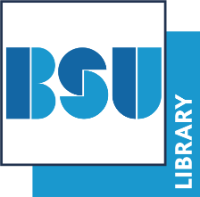Jamison, N.M and Kirova, A (2015) 'Bridging home and (pre)school multiliteracy practices through the use of iPads.' In: Gómez Chova, L, López Martínez, A and Candel Torres, I, eds. EDULEARN15 Proceedings: 7th International Conference on Education and New Learning Technologies. IATED Academy, Barcelona, Spain, pp. 3600-3609. ISBN 9788460682431
Abstract
The advancement of technology has impacted the modes, media, and concept of literacy. New media such as mobile devices (e.g. iPads) are embedded in the everyday experiences of many young children. Preschoolers’ home literacy experiences are significantly different from experiences prior to the digital era and these background experiences can influence the knowledge that children bring with them to school (Beecher, 2010). In addition, the impact of new technologies on our daily lives is one the factors that has motivated policy makers and educators to rethink and reform school curriculum. In many OECD countries, introduction of 21st century competencies and skills has occurred via general reform initiatives. Educators and researchers need to better understand the complex and multifaceted relationship between home and school literacy experiences of contemporary preschoolers to support development of literacy curriculum that better acknowledges the changing contexts of children’s literacies. This four-month qualitative intrinsic case study documented, described, and analyzed the ways preschoolers engaged in multiliteracy practices as part of an inquiry project on puppets at a preschool associated with a university in a large city in western Canada. It also examined the relationship between classroom and home multiliteracy practices, and parents’ and teacher’s perspectives in relation to these practices. Data consisted of recorded observations of twenty-five children, interviews with seven children, field notes from weekly visits, with detailed descriptions, and digital artifacts representing children’s range of multiliteracy practices in a preschool context. Thirteen parent questionnaires about home use of technology and home multiliteracy practices, and focus group conversations with the two teachers about their perceptions of children’s use of technology in relation to multiliteracies were also included. The study, grounded in Vygotsky’s (1978) socio-cultural theory of learning and Green’s (1988; 2012) three-dimensional view of literacy, was guided by the following research question: What multiliteracy practices do preschool children bring from home, and how do teachers build on and scaffold these practices in a preschool environment? During the period of the study, there was evidence of teacher and peer scaffolding, as well as independent use of iPads and apps in the classroom. This presentation will focus on the process of teacher scaffolding to support children’s use of iPads in their learning and creation of multimodal texts as part of an ongoing inquiries. The findings of this study inform early childhood educators in ongoing attempts to support the development of young children’s early literacies.
| Item Type: | Book Chapter or Section |
|---|---|
| Keywords: | early childhood education, preschool, multiliteracy, ipads, digital technology |
| Divisions: | School of Education |
| Related URLs: | |
| Date Deposited: | 25 Jan 2021 15:53 |
| Last Modified: | 15 Aug 2021 09:55 |
| URN: | https://researchspace.bathspa.ac.uk/id/eprint/13720 |
 |
Request a change to this item or report an issue |
 |
Update item (repository staff only) |

 Tools
Tools Tools
Tools